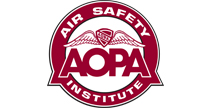Low-altitude aerobatics kills two
CEN10LA043
 By David Kenny
By David Kenny
Aerobatic instruction can benefit pilots who have no desire to fly competitive aerobatics. Understanding how the airplane behaves in the far corners of the flight envelope improves one’s ability to recover from an inadvertent upset; formal upset recovery training relies on the same techniques used to conclude intentional maneuvers.
Teaching yourself aerobatics is a good deal more problematic. Attempting those maneuvers at low altitudes with passengers on board is irresponsible.
On Nov. 8, 2009, a Skybolt aerobatic biplane crashed into an open field shortly after takeoff from the Quartz Mountain Airport in Altus, Okla. The pilot and his 17-year-old passenger were killed and the airplane was completely consumed by fire. The passenger’s father saw the crash and was the first to reach the scene; the intensity of the fire prevented him from reaching his son.
The pilot had spent the morning giving rides to a number of friends. Several of them told the investigators that they had gone on “nice, comfortable, normal flights” with no “aerobatic or abrupt maneuvers.” On the accident flight, however, the passenger’s father saw the Skybolt climb to about 50 feet above the runway, then pull up to a pitch angle of at least 45 degrees and bank hard to the right, still climbing. “At one point, it looked like (the airplane) was in a vertical climb, and that is when he performed a wing over-maneuver, either to the right or left, I can’t remember,” he wrote. “After that, the plane was in a nose dive towards the ground. It seemed like the wings were going back and forth or it may have even spiraled. I kept saying, ‘Pull up, pull up.’” A photograph taken shortly after that final takeoff shows the airplane pitching up aggressively from no more than 50 feet agl. The NTSB concluded that the Skybolt had stalled and spun from an altitude too low to permit recovery.
This wasn’t the first time the pilot had indulged in aerobatic maneuvers close to the ground. The airport’s line chief and a number of other pilots who did not see the accident itself described a routine the pilot liked to fly that included a high-speed pass down the runway, “waving his wings to the people at his hangar” from less than half a wingspan above the pavement, followed by a near-vertical climb-out into a turn at a bank angle of at least 60 degrees. The airport management told investigators that they had been unaware of any unusual maneuvering in their traffic pattern, and none of these episodes were ever reported to the FAA.
The pilot’s logbook showed a total of slightly less than 420 hours of total flight experience, including 73 in the Skybolt. Only three entries reported any kind of aerobatic instruction, and while all three were logged as “dual received,” only one, made more than three years before the accident, was actually signed by a CFI. The pilot had completed a flight review in the Skybolt on June 5; a logbook entry made 10 days later included the remark “Solo baby!!!” The second entry after that, made a month later, reported “4th airshow.” Two-thirds of his Skybolt time was logged in a single entry, reporting 50 hours “YTD.”
One of the people who had gone with him on “nice, comfortable, normal flights” described him as “a very meticulous person” and “a very careful pilot.” It seems likely that he tailored his flight profiles to the tastes of his passengers. It also seems likely that he didn’t fully appreciate why even seasoned airshow performers have to demonstrate their proficiency before they’re approved to fly low-altitude routines—and that his neighbors may have had reason to rethink their natural reluctance to report another pilot to the FAA.